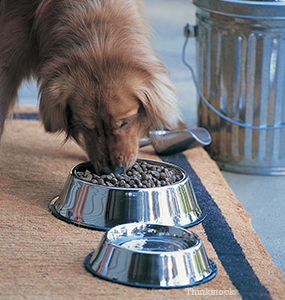 Dr. Jeff Werber joins our team of veterinary experts with regular contributions to the Pet Health Network. In this blog, Dr. Werber runs through the importance of proper nutrition for young, energetic dogs.
Dr. Jeff Werber joins our team of veterinary experts with regular contributions to the Pet Health Network. In this blog, Dr. Werber runs through the importance of proper nutrition for young, energetic dogs.Back-talking. Incessant text messaging. Parents become “uncool.” Boyfriends and girlfriends. Staying up until midnight. Sleeping until noon. Parents of children of a certain age are certainly aware that kids go through an often awkward adolescent stage as they mature into young adults. But what about our dogs? Do they go through “adolescence?” What does it look like? Is there anything we can do to help deal with it a bit more easily? Please?
Dogs definitely go through an adolescent, or young adult, stage. Canine development goes something like this: puppies experience a Rapid Growth Phase somewhere between 8 and 18-20 weeks of age. They seem to double their weight monthly, and require almost twice the calories an adult dog the same weight requires. Depending on the breed and size, puppies then progress to the Young Adult Phase between 6 months and about 2 years of age. This is a physically awkward stage when they appear as “legs and a head.” During this stage they begin to look more like an adult dog with a full set of adult teeth, and they near their adult height by just over six months. These young pups’ bones are still growing, but not nearly as fast as they did when they were three or four months old. By 1 ½ years, most dogs have reached their full adult height, and are now begin to fill out and put some muscle around those “legs and a head.” The “puppy coat” has gone, replaced by the adult coat and color scheme. Behaviorally, however, these young adults are still crazy puppies, continuing to develop socially, mentally, and behaviorally. And, with these larger adult teeth, any inappropriate chewing begins to cause much more damage.
At this age it is even more important to make necessary adjustments in your dog’s diet and exercise practices. Young adult dogs need a considerable amount of interaction to help burn off excess energy and aid in teaching and training basic commands. Nutritionally, they still need “puppy” levels of bone-growing nutrients like Calcium and Phosphorous, as well as brain developing nutrients like DHA (an essential Omega 3 fatty acid). Because their growth rates have slowed considerably, young adult dogs need fewer calories. This is why changing from a diet formulated for a puppy to an adult dog diet around one year of age is important. If you were to continue feeding a puppy diet into a dog’s second year, you run the risk of creating an overweight dog. Conversely, if you switch diets too soon, you may be inadvertently restricting essential nutrients necessary for healthy skeletal and brain development. Another potential cause of excess weight gain is spaying and neutering. It is now believed that spayed or neutered dogs need about 30- 40% fewer calories than intact dogs.
What can you do to help ease the transition from puppy to adult? How can you avoid behavior problems, weight gain, or other developmental issues? Start by working with your veterinarian to begin an appropriate behavior training, socialization, diet and exercise plan. Look for a young adult-specific food, or develop a mix of puppy and adult food to keep essential nutrients available while restricting the total calories as they get older. Research concludes that 70% of overweight puppies grow up to be overweight dogs; prevention is the key to combating obesity!
Good luck!
If you have any questions or concerns, you should always visit or call your veterinarian – they are your best resource to ensure the health and well-being of your pets.
